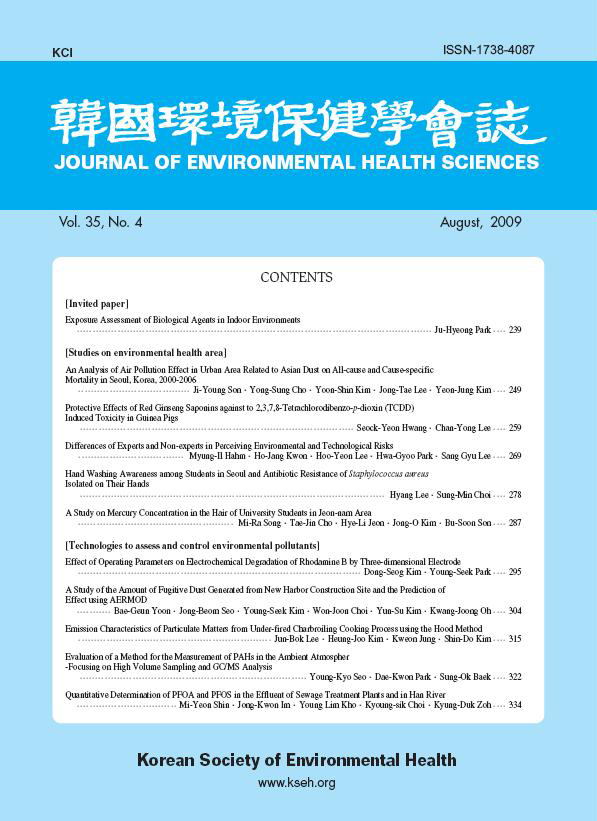- 영문명
- Emission Characteristics of Particulate Matters from Under-fired Charbroiling Cooking Process using the Hood Method
- 발행기관
- 한국환경보건학회
- 저자명
- 이준복(Jun-Bok Lee) 김흥주(Heung-Joo Kim) 정권(Kweon Jung) 김신도(Shin-Do Kim)
- 간행물 정보
- 『한국환경보건학회지』제35권 제4호, 315~321쪽, 전체 7쪽
- 주제분류
- 공학 > 환경공학
- 파일형태
- 발행일자
- 2009.08.30

국문 초록
영문 초록
Under-fired charbroiling cooking processes are known as important contributors of particulate matter (PM). In this
study, we characterized the emission of particulate matters from under-fired charbroiling cooking processes using the
hood method. Accumulated mass concentration of PM10 was 92.2~99.5% and particle size of 2.0~2.5 μm was highest.
The concentration of PM increased very sharply at the beginning of charbroiling meats and then gradually decreased
as the charbroiling continued. PM concentration also increased very sharply when gravy from meat spilled onto the
frame of fire. However, mass concentration during charbroiling using only charcoals was very low compared to that of
meats. We estimated the emission factors of charcoal, pork belly and pork shoulder respectively; 0.01~0.02 g/kg,
5.02~6.26 g/kg, 2.86~4.15 g/kg of PM2.5, 0.01~0.03 g/kg, 7.44~7.91 g/kg, 4.54~5.56 g/kg of PM10, and 0.02~0.05 g/
kg, 7.59~7.95 g/kg, 4.93~5.68 g/kg of TSP. The emission factors of charcoal were negligible and the emission factors
of pork belly were higher than that of pork shoulder. Emission rates of particulate matters from under-fired charbroiling
cooking process were estimated as 578,009~1,265,152 kg/yr of PM2.5, 917,539~1,598,619 kg/yr of PM10 and
996.358~1,606,703 kg/yr of TSP. But emission factors should be verified with an in-stack cascade impactor because
the reported method involves some assumptions.
목차
I. 서 론
II. 연구방법
III. 결과 및 고찰
IV. 결 론
참고문헌
해당간행물 수록 논문
참고문헌
최근 이용한 논문
교보eBook 첫 방문을 환영 합니다!

신규가입 혜택 지급이 완료 되었습니다.
바로 사용 가능한 교보e캐시 1,000원 (유효기간 7일)
지금 바로 교보eBook의 다양한 콘텐츠를 이용해 보세요!


